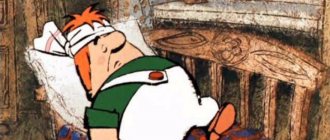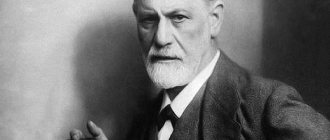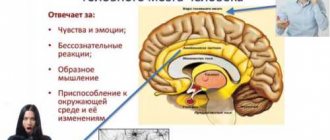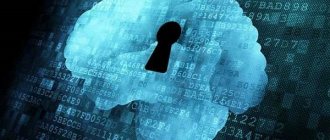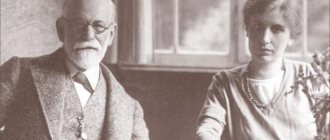The problems of man, his inner world, aroused no less interest among philosophers than the problems of global development. This was reflected in the philosophy of psychoanalysis, which tried to find a way out of the impasse in which philosophical science was placed at the beginning of the twentieth century as a result of the collision of two concepts. The first is positivism, which operates exclusively on natural scientific knowledge, the second is irrationalism, which relied on assumptions realized through intuition, faith, and feelings.
The emergence of psychoanalysis
The philosophy of psychoanalysis had an invaluable influence on the development of philosophical science, as well as on the spiritual culture of society. The founder of psychoanalysis was the Austrian psychiatrist S. Freud, who created, first of all, a method of treating patients. On its basis, the concept of philosophical views on the essence of man and culture was formed.
S. Freud and his followers - G. Jung, K. Horney, E. Fromm - are practicing doctors who pursue the goals of curing patients and understand that the philosophy of psychoanalysis is much more extensive than medical practice, and with its help it is possible to create new treatment methods. It was psychoanalysis that gave impetus to the formation of new concepts and views on philosophical issues, such as the philosophy of anthropology, life, and culture. Its peculiarity lay in its focus exclusively on man, his psyche, and problems.
Research
For over a hundred years, case reports in Modern Psychoanalysis, Psychoanalytic Quarterly, International Journal of Psychoanalysis, and the Journal of the American Psychoanalytic Association have assessed the effectiveness of psychoanalysis for neuroses and character and personality disorders. Psychoanalysis, modified by object relations techniques, has been effective in many complex cases of disturbances in the areas of intimacy and interpersonal relationships (see numerous publications by Otto Kernberg). As a therapeutic method, psychoanalytic techniques can also be useful in one-time consultations. Psychoanalytic treatment in other cases can last from a year to many years, depending on the severity and complexity of the pathology.
Psychoanalytic theory has been the subject of criticism and controversy since its inception. Freud noted this early in his career, when he was ostracized by medical circles in Vienna for his discovery that hysterical conversion symptoms were not limited to women. Criticism of psychoanalytic theory began with Otto Rank and Alfred Adler (in the early 20th century), continued within behaviorism (e.g. Wolpe) in the 1940s and 1950s, and continues today. Criticism comes from those who do not agree with the concept of the existence of unconscious mechanisms, thoughts or feelings. The claim of "childhood sexuality" (the description that children between the ages of two and six fantasize about procreation) has also been criticized. The criticism led to modifications of psychoanalytic theory, such as the work of Ronald Fairbairn, Michael Balint and John Bowlby. In recent decades, criticism has focused on the issue of empirical verification—despite multiple empirical prospective studies (see, for example, the work of Barbara Milord and her colleagues at Cornell University School of Medicine). In modern scientific literature one can find studies that support many of Freud's ideas, such as the unconscious, regression, etc.
Psychoanalysis has been used as a research tool in child development (see the journal The Psychoanalytic Study of the Child), and has developed into a flexible, effective method of treating mental disorders. In the 1960s, Freud's early (1905) ideas about child development and female sexuality were revised. This led to extensive research in the 1970s and 1980s and subsequent new concepts of female sexual development that corrected some of Freud's positions. See also numerous works by Eleanor Galenson, Nancy Chodorow, Karen Horney, Françoise Dolto, Melanie Klein, Selma Freiberg and others. More recently, researchers incorporating attachment theory into their work (e.g., Alice Lieberman, Susan Coates, and Daniel Schechter) have explored the role of parental trauma in young children's development of mental representations of self and others.
Several meta-studies have shown that psychoanalysis and psychodynamic psychotherapy are comparable in effectiveness to or superior to other types of psychotherapy or treatment with antidepressant medications. Empirical research suggests that “classical” long-term psychoanalysis—where the patient lies on a couch at least three times a week—is also effective. A 2005 review of randomized and controlled trials concluded that "psychoanalytic psychotherapy is (1) more effective than no treatment or standard treatment and (2) more effective than short forms of psychodynamic psychotherapy." Empirical research into the effectiveness of psychoanalysis and psychoanalytic psychotherapy has become popular among psychoanalytically oriented researchers.
Studies of the effectiveness of psychodynamic treatment in some populations have shown conflicting results. Research by Bertram Caron and his colleagues at Michigan State University suggests that careful use of psychodynamic therapy can be successful in the case of patients with schizophrenia. More recent studies question the validity of this claim. Thus, a report from the Schizophrenia Patient Outcomes Research Team (PORT) does not recommend the use of psychodynamic forms of psychotherapy for schizophrenia, indicating that additional research is needed to confirm their effectiveness. However, the PORT recommendation is based on expert clinician opinion rather than empirical evidence. There is empirical evidence that contradicts this recommendation.
There are various forms of psychoanalysis and psychotherapy that practice psychoanalytic thinking. For example, in addition to classical psychoanalysis, psychoanalytic psychotherapy. Other examples of common therapeutic methods that use the findings of psychoanalysis are Mentalization-Based Treatment and Transference-Focused Psychotherapy.
What is psychoanalysis
As mentioned above, Freud was a practicing psychiatrist who saw patients for 10 hours every day. Therefore, psychoanalysis is a medical method of healing, a part of psychotherapy, originally used for patients with hysteria. And later, in the process of working on it, it was accepted as a philosophical doctrine. Its essence lies in the fact that certain pathological ideas, most of which are of a sexual nature, are forced out of the area of consciousness and act from the sphere of unconsciousness, from where, under different robes, they penetrate into the sphere of consciousness, destroying the unity of the human “I” and the world around it.
Freud and his works
Freud was born and spent almost his entire life in Vienna. Here he received his medical education at the university, after which he began medical practice. It was here that his works on the philosophy of psychoanalysis saw the light of day, which enjoyed incredible success and had quite a powerful critical assessment. The conclusions that he presented in them excited society and cause controversy to this day. This was a challenge to classical philosophy, which focused on human consciousness.
In 1899, his first work on psychoanalysis, “The Interpretation of Dreams,” was published, which has still not lost its relevance and is a reference book for many leading practicing psychiatrists. Literally a year later, his new book “The Psychopathology of Everyday Life” will be published. Following it are “Wit and Its Relation to the Unconscious” and other significant works. All his works, both philosophical and medical in nature, were immediately translated into different languages of the world. They are still very popular today.
Classical philosophy argued that consciousness is the main regulating component of human life. Freud's philosophy of psychoanalysis established that underneath there are layers of unconscious desires, aspirations, and drives. They are filled with energy, the personal life of every person and, at the same time, the fate of civilizations depends on them.
The conflict between the unconscious and consciousness, dissatisfaction with innermost desires lead to mental disorders and mental illness. Modern Western philosophy of psychoanalysis emerged from the work of Freud. The method of psychoanalysis has become widespread among doctors in Western Europe and especially America.
Basics
Key points:
- human behavior, knowledge of the surrounding world and experience are determined by internal drives;
- they are irrational and unconscious;
- attempts to understand them cause psychological resistance, which manifests itself in the form of defense mechanisms;
- individual characteristics of behavior and personality depend on events that occurred in early childhood, at different stages of psychosexual development;
- conscious perception of the surrounding world and the material of the unconscious (repressed) come into conflict with each other;
- it leads to various psycho-emotional disorders: neuroses, depression, neurotic character traits, phobias;
- You can free yourself from the area of the unconscious if you become aware of it (but this can only be done with the help of a professional).
These are the basic ideas of psychoanalysis on which work with the patient is based.
Two stages in the philosophical activity of S. Freud
Medical practice and observation of patients gave the scientist a large amount of information for reflection. On its basis, work was carried out that formed certain views on the issues of psychoanalysis of S. Freud - a philosophy with certain aspects that can be divided into two stages. The first is the formation of the concept of the unconscious, its duration lasted from 1900-1920. The second lasted until the end of his life. It is at this stage that the unconscious is explored, including the instinctive cosmic urges of life and death.
First stage
At the beginning of his practice, collecting and analyzing experimental data, Freud made surprising conclusions about the presence in the psyche of people of previously unknown formations that have a certain structure and characteristics. Based on the conclusions drawn, he describes them as consciousness, subconscious and unconscious.
Although the Western school of thought emphasized consciousness, Freud's philosophy of psychoanalysis focused entirely on the unconscious. She defines it as a part of the psyche, where desires unconscious to a person, located outside the mind and timeless space, are pushed out.
Criticism
Throughout its existence, the psychoanalytic approach in psychology has been criticized from various points of view.
The main points of criticism:
- long course of therapy (Freud described a case where he conducted 1,017 sessions over 6 years of treating one patient);
- high risk of iatrogenic effects and conformism;
- ineffectiveness of short-term use;
- behavioral psychotherapy is 2 times more effective than psychoanalysis;
- the patient does not work on himself, he is completely dependent on the psychoanalyst;
- The irrationalism of the psychoanalytic trend is too confusing and not understandable to many people.
English biologist Peter Medawar called psychoanalysis the largest intellectual fraud of the twentieth century.
Despite all the criticism, the philosophy of psychoanalysis has played an important role in the development of society. It is actively used in almost all humanities. Without it, even the sexual revolution would have been impossible. Now this direction, represented by more than 20 schools and individual movements, is practiced as widely and often as it was a hundred years ago when it was created.
Second phase
Based on the revision of the concept in the philosophy of psychoanalysis of Sigmund Freud, the unconscious received some clarifications. Further study of it led to the fact that two more instinctive urges were added - death and life. It was during this period that the structure of the psyche was described, as well as the concept of the conflict between the unconscious and the conscious as a principle of human existence.
Practice
General treatment regimen
The analysand verbalizes (pronounces) thoughts based on free associations that arise in his head, as well as fantasies and dreams.
Next, the psychoanalyst, based on this material, finds unconscious conflicts that are the causes of all the problems of the analysand.
He eventually interprets them to find a way to solve problems.
Examples from Freud's private practice
In his works, Freud described in detail not only the theory of psychoanalysis, but also the clinical cases that he himself encountered. There are 43 of them in total, but 5 of them are the most famous. They demonstrate how psychiatrists should tailor their sessions depending on the diagnosis they are dealing with.
The psychoanalytic approach is effective for diagnoses such as:
- alarming and conversion hysteria;
- obsessive-compulsive neurosis;
- psychoneurotic depression;
- neurotic character traits;
- phobias;
- psychosomatics.
Contraindications are various forms of schizophrenia and manic-depressive psychosis. The psychoanalytic approach to the treatment of impulsive neurosis, perversion, addictions and deviant behavior is decided on an individual basis.
Methods of psychoanalysis
Free associations
Is the basic rule of psychoanalysis. The projective method consists in asking the analysand to freely say whatever comes to mind. At the same time, he can even express what seems absurd and obscene to him. The task of the psychoanalyst is to see in this stream of thoughts, isolate and analyze the unconscious, and connect it with the patient’s childhood and dreams.
Dream interpretation
The analysand is asked to tell all his dreams in the smallest detail over several sessions. It is in them that the unconscious is hidden. In his work The Interpretation of Dreams, Freud explained the meanings of many dream symbols that are still used in psychoanalysis today. Most of them are associated with hidden sexual desires.
Interpretation
The central stage of any psychoanalysis session. The psychoanalyst deciphers symbols from free associations and dreams for the patient and explains the essence of the internal conflict. The analysand, in turn, must accept and understand this interpretation. Only in this way can he begin to undermine the system of stagnant pathological, obsessive experiences that has developed on the basis of the contradictions of the unconscious and the conscious.
Resistance
A protective mechanism of the psyche that prevents penetration into the unconscious. This is the force that maintains the painful state. It prevents the patient from saying everything that is in his head. Often this is upbringing or social stereotypes.
Transfer
Another name is transfer. Unconscious transfer of previously experienced feelings to a completely different person (not the one to whom they were directed before). Including a psychoanalyst.
Elaboration
The last stage with the analysand is when a restructuring of the psyche occurs. The main task is to change habitual behavior and established relationships through liberation from pathogenic patterns.
These are the main techniques used by a psychoanalyst in working with various mental disorders.
Three components of the structure of the psyche
If we briefly outline Freud's philosophy of psychoanalysis, it should be noted that the human psyche has three structures that can be characterized as:
1. Unconscious (It). This layer of the psyche is inherited by a person from distant ancestors. It is in it that two basic human instincts are found:
- Procreation is sexual attraction and energy, or, according to Freud’s definition, libido.
- Self-preservation. Determines aggressive behavior.
The unconscious, according to Freud's definition, is beyond the limits of the rational, in other words, it is irrational and immoral (immoral).
2. Subconscious (I). Formed on the basis of life experience. The “I” intelligently, and in accordance with reality, tries to translate the unconscious “It” into conformity with the moral principles of the “Super-ego”. Its goal is to limit the reflex impulses of the “It” in accordance with the current requirements of the reality in which a person is located.
3. Consciousness (Super-I). It can be defined as the conscience or judge who controls and punishes the unconscious “It”. It is in it that all the norms of morality, morality, and all human ideals are concentrated.
Moreover, each component lives its own life and does not depend on the others. Even if we briefly get acquainted with the philosophy of psychoanalysis, we can conclude that consciousness is violence against natural instincts.
Psychoanalytic philosophy.
Psychoanalytic philosophy arose as a new metaphysical teaching that comprehends the hidden recesses of the human soul, dark mental labyrinths (unconscious, subconscious), as well as corners of the human psyche enlightened by reason, or, in other words, everything that can be explained logically, consciously. It should be noted that the unconscious layer of the psyche also contains rich opportunities for a certain irrationalization of human life. This concerns, first of all, the manifestation and saving of internal (spiritual) energy, which is inherent in the inner layers of the psyche, in the innate instincts of a person.
The principles of medical psychoanalysis were formulated by the Austrian scientist Sigmund Freud (1856-1939). His indisputable historical merit was that he laid the foundation for a systematic, strictly scientific study of the unconscious. This new, essentially philosophical teaching had a strong impact on public consciousness, on the development of natural and human sciences, but especially medical psychology and philosophy. Without the idea of the unconscious, it is difficult today to imagine modern psychology, psychiatry, cultural studies, philosophy, and indeed the entire spiritual culture of humanity.
Psychoanalytic teaching has many aspects. First of all, it is a doctrine about man, although this topic is not exhausted. Having emerged in the bosom of psychiatry as a new approach to the treatment of neuroses using the method of catharsis, or mental self-purification, psychoanalysis has grown into a new direction in medicine and philosophical anthropology. 3. Freud, being a practicing physician, studied the causes and nature of neuroses. He discovered a hidden (unconscious) layer of the human psyche, which had previously been completely unknown and had not been studied by anyone. Gradually, from a medical method of treating neuroses, psychoanalysis grew to the level of scientific psychology, and then to a new philosophical school of thought. It made it possible to comprehend individual and socio-cultural factors in the self-development of the individual. “Freud is the founder of a truly scientific psychology,” wrote the American philosopher E. Fromm (1900-1980), his follower, “and his discovery of unconscious processes and the dynamic nature of character constitutes a unique contribution to the science of man, which changed the idea of him for all times to come " [10].
Precisely 3. Freud showed everyone that “man is not at all the master in his own house.” The unconscious rules in the human soul (psyche). The scientist, having identified several deep layers (layers) in the latter - unconsciousness, subconsciousness (preconsciousness), consciousness and "Super-I", - created a new, original model of personality, which is a combination of three elements: "It", "I" and " Super-ego (super ego). “It” is an innate layer of the psyche, which is located beyond the lower limits of human consciousness and includes various kinds of biophysiological preferences, instincts such as sexual desires, natural passions. This is the lowest, but at least the most powerful, “wild” layer of the psyche (like the base of an iceberg), the mental self is the basis of the life activity of all human individuals. As an unconscious attraction, it gives a person the main charge of powerful psychic energy. People vaguely feel the impulses of this energy, which pushes them to be active in some area of activity. The latter can be both destructive and creative. Thus, Freud was the first to show that a person has powerful internal forces that oppose his mind (consciousness).
The subconscious (or preconscious) is an already formed mental layer. It is incomparably wider and higher than the unconscious. Therefore, the category “subconscious”, no less than the category “unconscious”, is a fundamental theme in the teachings of Z. Freud. This is a state of the human psyche that is similar to the unconscious due to the fact that it is also hidden, and if expressed, it is implicit. The subconscious concerns two internal (mental) spheres of influence on a person and his behavior. In the first case, the behavior, having been brought to automatism as a result of training, occurs as if on its own, unconsciously (for example, riding a bicycle). But the subconscious can be thought at any time, and the corresponding behavior can be explained. In another case, behavior is initially unconscious, but subsequently it can be subject to awareness and understanding. A subconscious idea is one that a person simply does not notice, but whose presence he feels and recognizes. The subconscious is revealed only in extreme cases, for example, when erroneous actions are detected or in a dream.
The highest layer of the human psyche is consciousness, or “I”. According to Freud, it is the “I” that is the sphere of man’s awareness of the existence of the world and himself in it. Moreover, in the individual’s psyche there is no organic layering of consciousness on the subconscious and unconscious.
An acute conflict arises between unconsciousness and consciousness, which provokes the formation of another layer in the individual’s psyche. It can be called a social spiritual layer. Being at the top of the human psyche, it greatly influences it - this is the “Super-I”. It is important that in no case should it be considered superconscious. The “Super Ego” is an a priori moral law, external social requirements appropriated by the individual, which become his personal property. The “super-ego” is, one might say, the intrapersonal conscience of the individual. Freud called the corresponding mental state “the individual’s internal censorship,” which gradually develops and becomes consolidated in his mentality as a result of his assimilation of socially and spiritually significant moral norms and religious commandments, as well as higher ideals, universal values, etc. Therefore, consciousness, or the “I,” is destined to always be between the unconscious and the “Super-I,” that is, between the unconscious internal energy of the “It” and the influence of the higher forces of moral and cultural censorship of the individual, formed by society. Thus, consciousness finds itself, as it were, between a rock and a hard place. The “super-ego” introduces and “affirms” the social principle in the human individual. As a result of the influence of the “Super-Ego”, he is socialized into a personality.
According to Z. Freud, under certain conditions, unconscious impulses and other instinctive drives of a person (among the latter, sexual ones occupy a special place) underlie almost all manifestations of the individual spirit, including the base ones, and often the most sublime and noble ones. However, it also happens that the creative energy of a human individual in all spheres of his life is “clogged” by psychic energy such as Freudian libido (Latin libido - passion) - sensual lust, sexual unconscious attraction, desire, inclination. However, in contrast to the natural desire for self-preservation, it can be supplanted by something spiritually sublime as a result of a complex mental transformation, that is, sublimation (Latin sublimare - to elevate, elevate). It is sublimation that determines the basic beginning of the formation of a person’s creative activity in all spheres of his activity: science, medicine, art, philosophy, and ultimately in all social manifestations of his life.
Libido, which gives a person a powerful charge of internal (psychic) energy, functions as if in two sections. Firstly, by sublimating, it is not realized by a person, but effectively spiritualizes his life, displacing the “dark” sexual desire. And as a result of the action of the “Super-Ego” - the aura generated in the individual by his community, culture, traditions, etc. - base desires change and become completely noble. In this sense, the unconscious, in the form of the sexual energy contained in it, becomes the source of certain creative urges in life and activity. Thus, sublimation appears to be nothing more than an effective means of releasing sexual (dark) energy and its purposeful translation into positive types and forms of the individual’s social and creative energy. Sublimation acts as a “psychic generator” of personality in order to influence the growth of socio-cultural progress. Thanks to her, a person achieves noticeable success in her chosen field of activity. But this depends both on the innate energy of sexual attraction and on the direction of sublimation. All these observations allowed 3. Freud to philosophically comprehend the role of the latter as an effective switching factor.
However, libido can simply be brutally repressed from the human psyche. Such repression is exactly the opposite of the effect of sublimation. In this case, it does not turn into anything, but it does not disappear on its own, but goes deep somewhere into the depths of the psyche, where it remains in a latent state until the onset of certain “favorable” conditions, namely the weakening or temporary cessation of internal censorship - conscience, “Super-I”. Rough repression of libido affects the human psyche, awakening aggressiveness in him. It drives the energy of sexual desire into the lower layers of the psyche, which often leads to mental disorders and neuroses. The best way to get rid of such a hidden unconscious state is to comprehend it with consciousness, for which it is necessary to conduct a subtle psychoanalysis using the method of introspection (Latin introspectare - look inside). We are talking about a kind of confession when the patient, guided by the psychoanalyst, “remembers” his vicious thoughts, desires and is freed from their harmful effects.
Taking into account all that has been said, we can conclude that the Freudian person - “I” (or personality) - turns out to be woven from a number of opposing factors, conditioned by natural (natural) drives and completely conscious (socio-moral) norms, principles of organizing life activity. Therefore, the inner (spiritual) world of a person constantly experiences a difficult dramatic situation under the pressure of the influence of two superforces on it: on the one hand, dark internal (ancestral), sometimes rough innate mental energy, always rushing out, and on the other - external (socio-cultural) energy that purposefully restrains the destructive power of dark instincts. It is this circumstance that determines the nature of the individual and social behavior of each individual person.
From the above brief summary of Freud’s teachings on psychoanalysis, it is clear that in it a metaphysical (philosophical) understanding of the generic essence of the human psyche and real ways and means of organizing a healthy lifestyle of an individual at the personal level are intricately intertwined. According to Freud, nature has endowed man with generic, psychologically determined aspirations. Satisfaction of these aspirations ultimately leads to the formation of personality. Freudianism, thus, has transformed from a private neurological concept of treatment into a new, modern direction of philosophical understanding of personality as a physiopsychosocial integrity. And this suggests the conclusion that when treating all patients, it is necessary to proceed from an understanding of the person’s personal characteristics. The philosophical doctrine of 3. Freud thereby thoroughly modernized concrete scientific methods, schemes for organizing and regulating mental activity.
One of Freud's followers, Carl Gustav Jung (1875-1961), a Swiss psychologist and philosopher, moved on to consider a broader spectrum of the human psyche, namely, how the unconscious extends beyond the boundaries of the human “I” - a specific individual. He undertook an unprecedented differentiation of Freud's “Id.” The scientist doubted that Freud rightfully reduced all unconscious human activity to biologically inherited instincts. According to Jung, human instincts are not biological, but rather cultural and symbolic in nature. The scientist suggested that the structure of a person’s inner world is multi-layered. The mental world contains the individual unconscious of life experience and a deeper innate layer - the collective unconscious, which is a reflection of the ancestral experience of all previous generations of people in the form of archetypes, or universally inherited universal prototypes, symbols, stereotypes, such as the “mind of the heart”, “sage”, “hero”, “Motherland”, “Russian soul”. Thus, Jung argued that the unconscious has a generic origin.
Jung's archetypes are associated with the collective life of people and are fixed in the psyche of each person, passed on from generation to generation. “Unlike the personal unconscious, which is to a certain extent a relatively superficial layer immediately below the threshold of consciousness,” argued K.G. Jung, the collective unconscious is not conscious under normal conditions, therefore even with the help of analytical techniques it is impossible to evoke a memory, since it has not been repressed or forgotten. In itself, the collective unconscious does not exist at all; in fact, it is nothing more than a possibility, that very possibility that has been inherited to us since ancient times through a certain form of mnemonic images or, to put it anatomically, through the structure of the brain. There are no innate ideas, but, probably, there is an innate possibility of ideas, which determines the boundaries of even the most daring fantasy, determines, so to speak, the categories of fantasy activity...” [I]. Thus, the mental core of the personality is the internal co-evolution of the individual and collective unconscious. It should be noted that the assumptions of K.G. Jung's idea of the existence of some specific archetypes requires further philosophical understanding and scientific justification.
By the end of the 30s of the 20th century, neo-Freudianism was formed as a result of the combination of psychoanalysis with sociological, ethnological and anthropological theories. The starting point of the new philosophical movement in psychology was the so-called principle of social determinism. According to K. Horney, from the biologizing attitude of the founder of psychoanalysis there is no conclusion about how one can help a person in his spiritual growth. The scientist, to a certain extent, rehabilitates the unconscious, trying to remove the accusation of destructiveness and antisociality from it. The unconscious, of course, is destructive, but solely because such is the social environment that gave birth to it. “We return to the ancient medical wisdom,” writes K. Horney, “which says that healing powers are inherent in both the human body and soul and that in case of illness of body and soul, the doctor must simply help eliminate the harmful ones and maintain the healing powers. The value of psychoanalytic therapy is that, by weakening destructive forces, it gives a chance for the constructive forces of a person to emerge” [12].
The American social psychologist and philosopher Erich Fromm characterized this position of K. Horney as anthropological. Advocating for the development of humanistically oriented psychoanalysis, he appeals to the social mood of the individual and proceeds from the fact that man is primarily a social being. E. Fromm sharply criticized Freud's excessive absolutization of the role of the unconscious in a person's individual life, giving it a sociological dimension. It was this scientist who became the first radical reformer of Freud's psychoanalysis. E. Fromm proved that the main approach to the study of human personality should be to understand the individual’s relationship to the social world, to other people, to nature and to himself. The differences between Z. Freud's biological approach to the formation of man as a personality, the anthropological concept of K. Horney and E. Fromm's socio-philosophical understanding of these same problems are very significant and fundamental. According to the views of the latter, man from the very beginning of his life is a social being. Social structure and natural nature in it act as equal entities: the social and mental exist in parallel, on a parity basis. In this regard, Fromm even managed to open a whole gallery of new social types and characters.
E. Fromm philosophically deeply comprehended the social and political conflicts of his time. He called his own concept radical humanism. This name speaks for itself, indicating the denial of any suprahuman (but not transpersonal) principle as the main task of the seeking person. Radical humanism, according to Fromm, is the doctrine of the true existence (or existence) of man, the true ancestor of which was K. Marx. For K. Marx, a person lives as long as he is obsessed with creativity and transforms the world through his own efforts. And therefore, E. Fromm’s conclusion is clear: Marx’s teaching is animated by humanistic values. Supporters of radical humanism defend the independence of man from any higher powers. The latter circumstance led them to defend the humanistic orientation of the philosophy of Marxism. “Marx touches on the Kantian principle, which states that man must always be his own end and can never be a means to an end. But Marx, writes E. Fromm, expands this principle further, arguing that a human being should not turn into a means of achieving not only other people’s goals, but even into a means of his own individual existence” [13].
Nowadays, Freudo-Marxists have become consistent adherents of the ideas of psychoanalysis in applying them to the individual and human society. They, like E. Fromm, call for a change in people’s lifestyles, the creation of a new society and a new person, who will face real opportunities for optimal development and improvement in a healthy social atmosphere. E. Fromm, by the way, received a rather deep understanding of the socio-cultural phenomenon in the human psyche, called “mentality” (French mentalite - mindset, way of thinking, worldview). It carries out a deep synthesis of individual and collective consciousness, including elements of the unconscious. If we keep in mind the mentality of a modern person, then it is formed on the basis of philosophical and religious views, folk traditions, original spiritual culture, the quality of the social environment and, in turn, exerts its influence on them.
If you find an error, please select a piece of text and press Ctrl+Enter.
The meaning of libido
Freud, in the philosophy of psychoanalysis he created, introduces the concept of libido (sexual attraction or desire) into the unconscious “It” as a constituent instinct. Moreover, its energy is so great that it leaves an unforgettable mark on a person’s life. Exploring it, he comes to the conclusion that libido includes, in addition to erotic love, all its other types: towards oneself, children, parents, animals, the Motherland, and so on.
Sometimes the unconscious (It) sends a powerful sexual challenge, but for some reason it comes back, or simply its impulse becomes less intense, discharged, and switches to other, higher areas of human activity. This could be art, science, politics, social activities, and so on.
From this, Freud draws the logical conclusion that culture, morality and any other human activity is a sublimated (redirected and transformed) sexual need. According to Freud's philosophy of psychoanalysis, any culture on Earth, including European culture, is the fruit of the activity of neurotics, whose sexual desires were suppressed and transformed into other types of human activity.
Psychoanalysis and neo-Freudian philosophy
Freud's ideas were taken up by his followers, and their work on the development and further understanding of psychoanalysis led to new views on it. His students and followers went further, comprehending and developing psychoanalysis. Psychoanalysis occupies a significant place in the philosophy of the 20th century. The most famous representatives of neo-Freudianism are E. Fromm, K. Horney, G. Sullivan.
They recognized a certain role of the unconscious, the role of instincts, but at the same time believed that social factors, which include social connections, relationships between people, and culture, were also important. They believed that the conditions in which a person lives significantly influence his behavior in society and the content of his activities.
The differences with Freud consisted primarily in the fact that, in comparison with him, who accepted only sexual energy, they recognized the participation of consciousness and the social factor in the development of personality. That is, they leaned towards classical philosophy, which recognizes only the role of consciousness.
The role of neo-Freudians in the development of the theory of the unconscious is great. This can be explained by the fact that they study not only individual, but also social consciousness, dividing it into conscious and unconscious. They operate with such a concept as overcompensation - a social response to feelings of inferiority. This is the basis for the emergence of great people endowed with remarkable abilities.
Hence the conclusion follows: if Freud tried to find out the reason for a person to commit certain actions, then his followers, using the basic ideas of the philosophy of psychoanalysis, tried to explain the social structure of life in which this person lives.
Kinds
Classic Freudianism
The basic concept in a nutshell: any mental disorder is the result of a conflict between the unconscious (formed under the influence of psychosexual development) and the conscious (dictated by upbringing and social norms).
Jungian psychoanalysis
Another name is analytical (complex) psychology. The goal is to comprehend and integrate the deep forces and motivations of human behavior through the phenomenology of not only dreams (as in Freud), but also folklore and mythology. The key concept is the collective unconscious.
Statistical
Olga Pertseva’s author’s technique, based on the square (psychomatrix) of Pythagoras. Allows you to create a digital portrait of a person, uncomplicated by society’s patterns imposed by patterns of thinking and behavior. One of the directions in numerology.
Existential
The technique of existential psychotherapy developed by J.-P. Sartre. According to her, a person is a complete integrity, and not a complex of behavior patterns that come into conflict with sexual instincts (as with Freud). The main tool is observation.
Humanistic
The founder is Fromm. Denies the leading role of sexual desires in personality development. Focuses attention on other factors of its formation - sociological, political, economic, religious and cultural.
Structural
The founder is J. Lacan. A direction that uses the special meaning of language to characterize the unconscious. It is actively used for the treatment of speech disorders caused by mental disorders and childhood trauma.
Ego psychology
The leading role in the psyche is assigned to the Ego (according to the classical concept, it was played by the Id). Representatives: A. Freud (the youngest daughter of Sigmund Freud), E. Glover, E. Erikson.
Object Relations Theory
The basis of the British school of psychoanalysis. The basic idea is that people’s attitudes towards the world around them in adulthood are formed under the influence of experiences in childhood. The main representatives are M. Klein and D. Sandler.
Modern schools with a psychoanalytic approach to the treatment of disorders are also Kohut's Self psychology, Sullivan's interpersonalism and Stolorow's intersubjectivism.
Carl Jung and his doctrine of the “collective unconscious”
A. Adler (personal psychology) and C. Jung (depth psychology) subsequently moved away from Freud’s followers and formed their own directions. Representative of the philosophy of psychoanalysis K. Jung is a Swiss psychiatrist, philosopher, and colleague of Freud for several years. His works expanded and strengthened positions in this direction. It was Jung who created a new movement in the philosophy of culture - analytical psychology.
He was a champion of Freud's methods of treating patients and his philosophy of psychoanalysis. Jung, who fully shared the medical and philosophical views of his older comrade and teacher, eventually diverged from him regarding the unconscious. In particular, this concerns libido.
Jung did not agree with Freud's philosophy of psychoanalysis that all impulses of the “Id” were classified as sexuality; he interpreted it much more broadly. According to Jung, libido is all types of life energy that are perceived by a person as unconscious desires and aspirations.
According to Jung, libido is not in an unchanged state, but undergoes transformation and complex transformations due to difficult life situations, and all this is far from sexuality. In this regard, experiences and images arise in people’s minds that are associated with ancient events at the beginning of human life. These are not just words, Jung took these facts from his medical practice. It is Jung’s philosophy of psychoanalysis that gives the unconscious “It” a collective and impersonal beginning, and only after that a subjective and individual one.
Major discoveries
Freud made several fundamental discoveries in the field of psychology, introducing new trends and concepts. These include:
- Unconscious. By the Unconscious, Freud understood a special area of the psyche, the presence of which a person is not aware of. The unconscious seeks to subjugate the will and relieve the human individual from the pressure of moral standards.
- Libido. Freud called it the engine of the individual's mental life. Libido activity affects ambitions and aspirations. Freud draws a parallel between sexual and social activity: a man’s libido is stronger than a woman’s, so he has a stronger need for sex and a desire for competition.
- Interpretation of dreams. The unconscious constantly tries to overpower the will of the individual and sends him signals reminding him of suppressed desires. A person receives these signals in the form of dreams. To get rid of anxiety, you need to analyze dreams and find the true causes of discomfort.
- Neuroticism. Freud grouped mental disorders caused by suppression of impulses into one group and called them nervous diseases or neuroticism. All people existing within European culture are susceptible to neuroticism, since they are distant from nature and are forced to constantly control their natural needs.
Not all contemporaries welcomed Freud's ideas; some criticized them. Karen Horney, an American psychoanalyst, in one of her works examined in detail Freud's theory of women's envy of the male penis and suggested that in fact a man is jealous of the presence of a uterus and the ability to reproduce, and the driving force of the human personality is not libido, but anxiety. Karen's bold views made her one of the iconic figures of neo-Freudianism.
What are archetypes
The collective unconscious makes up archetypes - universal basic innate structures, they are the cause of experiences of events from the ancient history of the origin of humanity, which can appear to a person in dreams and be the cause of unrest and mental disorders, they are the environment from which a person’s spiritual life and the entire culture are formed humanity.
The definitions of most archetypes have become common nouns and entered people’s everyday lives, like sayings, for example:
- A mask is a person’s face, which he “pulls on” during any contact with strangers, as well as at official meetings;
- The shadow is the second face of a person, which consists of vicious character traits or unacceptable qualities repressed into the subconscious.
Of great importance for a person, according to Jung, is the archetype “My True Self” or “Self,” which is a synthesis of all archetypes. A person must comprehend this “I” throughout his life. The first results of this development, according to Jung, appear no earlier than middle age.
At this time, a person already has sufficient life experience. This also requires a mandatory high level of intelligence development and persistent work on oneself. Only by reaching the cherished peak can a person be fully realized and understand the “incomprehensible” that is closed to mere mortals. Only a few will know it; most will not.
Theory
An analysand is a patient with whom a psychoanalyst works.
Metapsychology is the entire theory of psychoanalysis.
Topographic model of the psyche:
- conscious - its superficial, understandable, visible part;
- unconscious - hidden, incomprehensible, mysterious, unconscious;
- preconscious - borderline, located in the area of the unconscious, but breaking out during certain situations of choice or in dreams.
Structural model of the psyche:
- Id (It) - instinct, obeys the principle of pleasure;
- Ego (I) - contact with the outside world through perception, controls behavior and thinking;
- Superego (Super-I) - moral norms, values based on moral prohibitions and formed in the process of education.
Personality structure according to S. Freud
Stages of psychosexual development - experience that leaves an imprint in the form of moral attitudes, character traits, behavior patterns:
- Oral phase (from birth to 1.5 years) - dominance of the id.
- Anal (1.5-3.5) - the formation of the super-ego under the influence of norms, rules, restrictions, prohibitions.
- Phallic (3.5-6) - increased interest in sex, which most often leads to Oedipus or Electra complexes.
- Latent (6-12) - absence of manifestations, break.
- Genital, adult (from 12 years old).
A protective psychological mechanism is an unconscious mental process aimed at eliminating negative experiences:
- substitute;
- compensatory;
- displacing;
- denying;
- projecting;
- sublimating;
- rationalizing;
- retrogressive.
These are the basic defense mechanisms described by Freud. Today the list has been significantly expanded and includes more than 30 mental processes.
E. Fromm and his concept of “existential dichotomy”
The German philosopher and psychoanalyst E. Fromm, a follower of Freud's teachings, introduced the concepts of existentialism, as well as Marxism, into psychoanalysis. He formulated his concept in the book “The Soul of Man.” The concept of “existentialism” can be defined as a philosophy of survival that stands on the duality of human essence. Dichotomy is a bifurcation, a gradual division into two entities, the internal connection of which is more noticeable than the external one. An example is a person who is essentially a biological being, but the presence of reason in him takes him out of this circle, makes him a stranger in the natural world, separates him from nature.
The philosophy of existentialism and psychoanalysis is, according to Fromm’s definition, humanistic psychoanalysis, designed to study a person’s personality from the point of view of the relationship between him and society, namely, a person’s attitude towards himself, the people around him and society.
Fromm attached great importance to love. He argued that the emergence of a feeling, its development, changes a person, makes him better, reveals hidden depths in him, qualities that can ennoble him, raise him to unprecedented heights. It manifests responsibility for another, a feeling of attachment to a loved one, to the whole world. This leads a person from harmful egoism to humanistic feelings and altruism.


